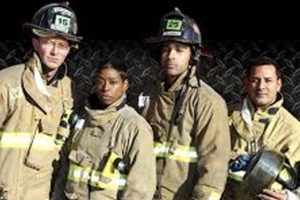
Firefighters Are At Risk Of Prostate Cancer. Bill Ravenscraft is a prostate cancer survivor. He’s also the chief of Newport’s Fire/EMS Department. When he learned a study out today from the University of Cincinnati shows that firefighter are at greater risk for prostate cancer and three other cancers, he called the findings interesting, but not surprising. […]

Firefighters Are At Risk Of Prostate Cancer. Bill Ravenscraft is a prostate cancer survivor. He’s also the chief of Newport’s Fire/EMS Department.
When he learned a study out today from the University of Cincinnati shows that firefighter are at greater risk for prostate cancer and three other cancers, he called the findings interesting, but not surprising.
“I’ve seen it in so many of the firefighter I’ve known and worked with,” Ravenscraft said.
UC researchers analyzed data from 32 previously published studies and found that firefighters are from about 1.25 times to more than 2 times as likely as other workers to develop prostate cancer, testicular cancer and non-Hodgkin’s lymphoma.
Firefighters are more than twice as likely as other professionals to develop testicular cancer, researchers found.
Their findings also confirmed earlier studies that showed firefighters are more than 1.5 times more likely than other workers to develop multiple myeloma.
Firefighters are more likely to develop other cancers, although the increased risk is not as pronounced, data show.
The data, garnered from 110,000 firefighters, suggest firefighters’ protective equipment might not protect them from chronic, low-dose exposure to cancer-causing compounds, including benzene, diesel fumes, soot and chloroform, say James Lockey and Grace LeMasters, two of the three principal investigators on the study.
“Firefighters have excellent equipment in relation to the acute hazards they’re facing, the high heat and carbon monoxide,” Lockey said.
When firefighters get away from the heat and flames and remove their hot, cumbersome equipment, there might be other risks that are less apparent, he and LeMasters said.
Besides the smoke and fumes firefighter breathe, soot and dust that accumulates on their skin is a concern, LeMasters said.
“Firefighter are in an inherently dangerous occupation on a daily basis,” she said. “As public servants, they need and deserve additional protective measures that will ensure they aren’t at increased cancer risk.”
Lockey is a pulmonologist. LeMasters is an epidemiologist.
Marc Monahan, president of Cincinnati Firefighters Local 48, said the study “definitely opened my eyes.”
Better technology means firefighters are safer than ever inside the fire, Monahan said, “but outside the fire, it’s something that will definitely have to be looked at.”
Monahan and Ravenscraft both said firefighters are exposed to more plastics and other chemicals than ever in carpeting, ceiling tiles, paint and other components in residential and structural fires.
“I doubt if they know what those chemicals can do,” Ravenscraft said.
Monitoring the quality of the air on the edge of fire scenes might provide some clues, Monahan said.
LeMasters and Lockey also suggested firefighters consider showering as soon as they get back to the firehouse to remove soot and dust that could be absorbed through the skin.
That could be difficult, said Ravenscraft. Firefighters are trained to clean off their equipment once they get back to base so everything is ready for the next run.
The personal injury attorneys at Parker Waichman LLP offer free, no-obligation case evaluations. For more information, fill out our online contact form or call 1-800-YOURLAWYER (1-800-968-7529).


